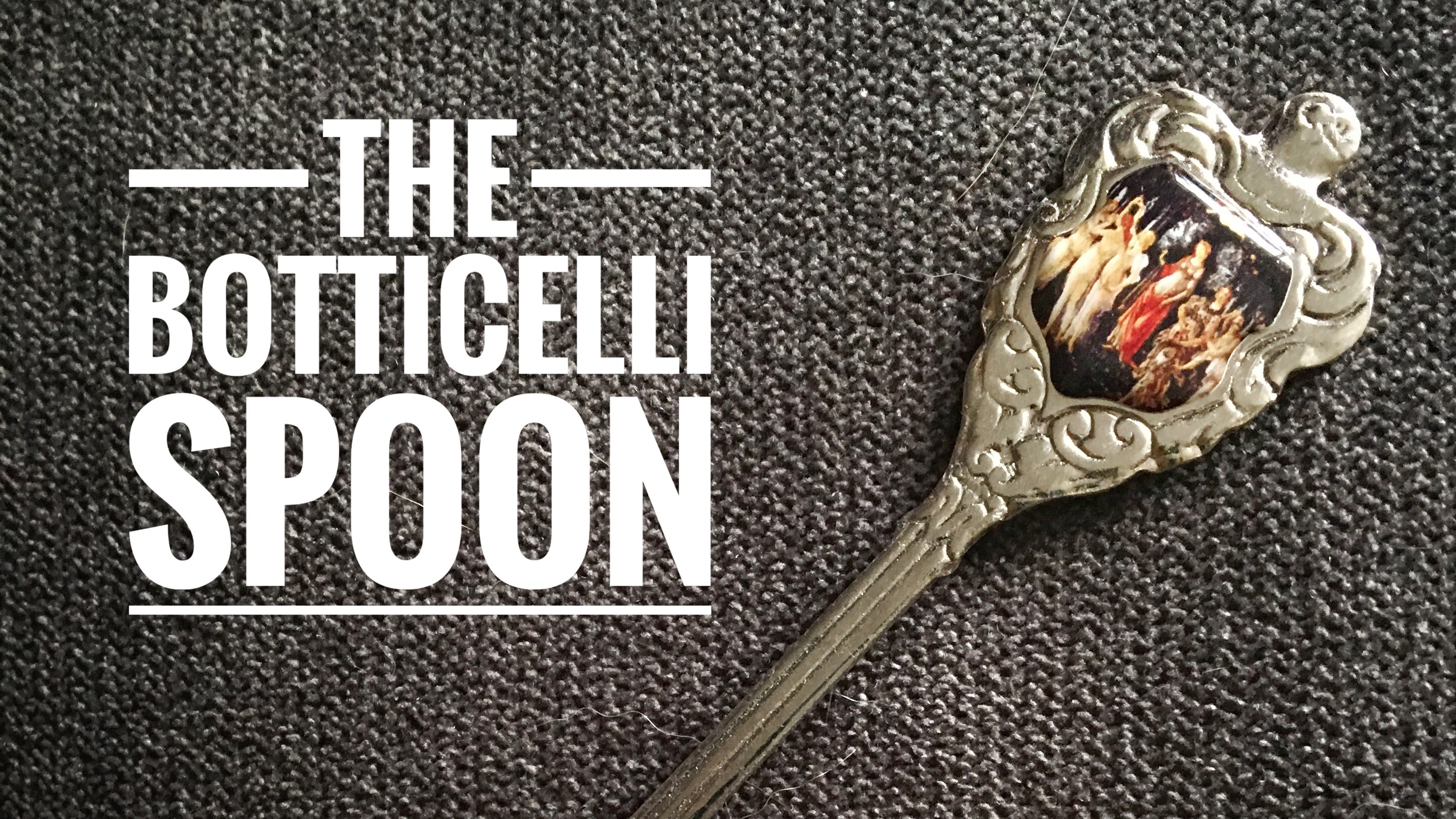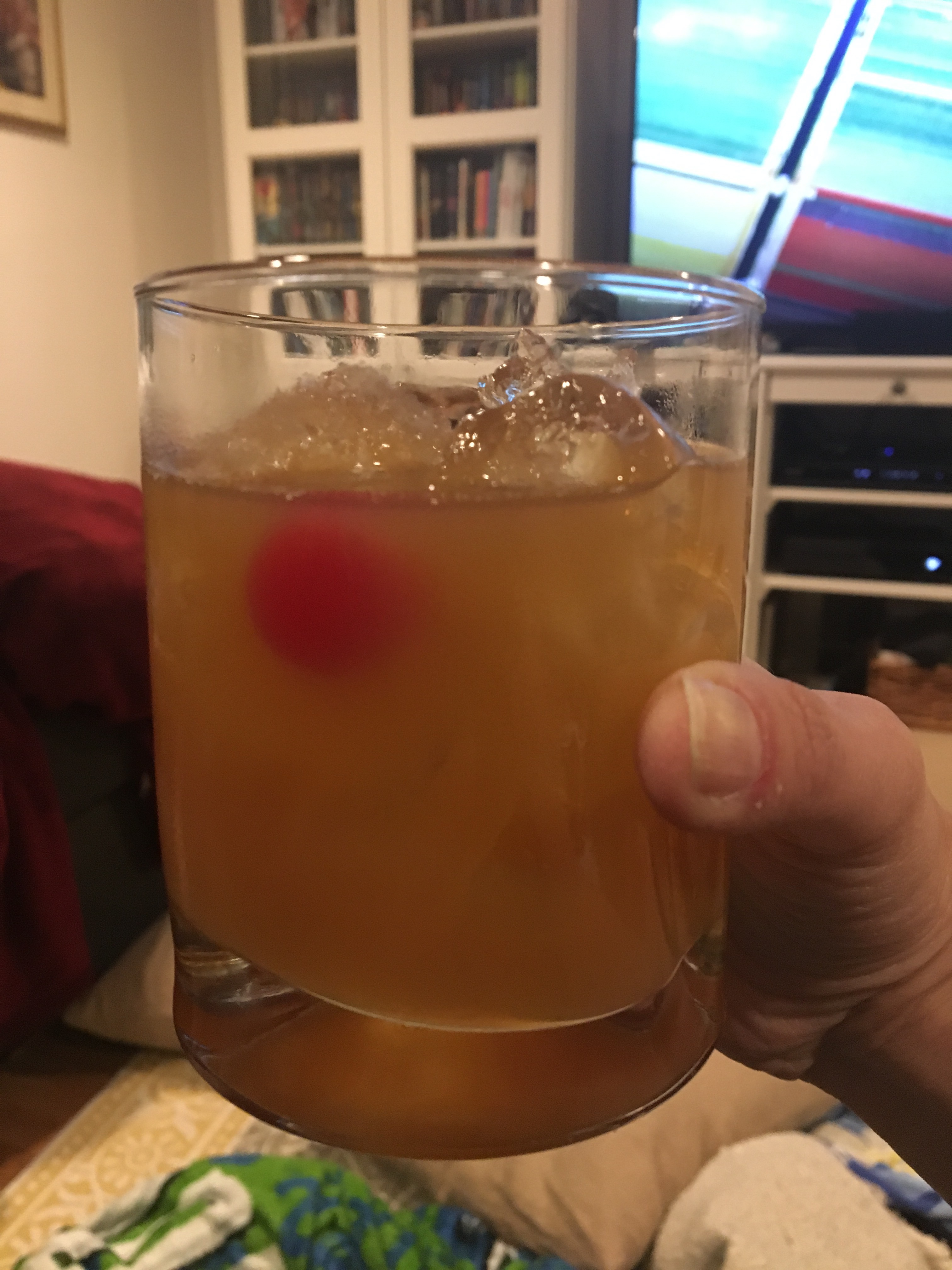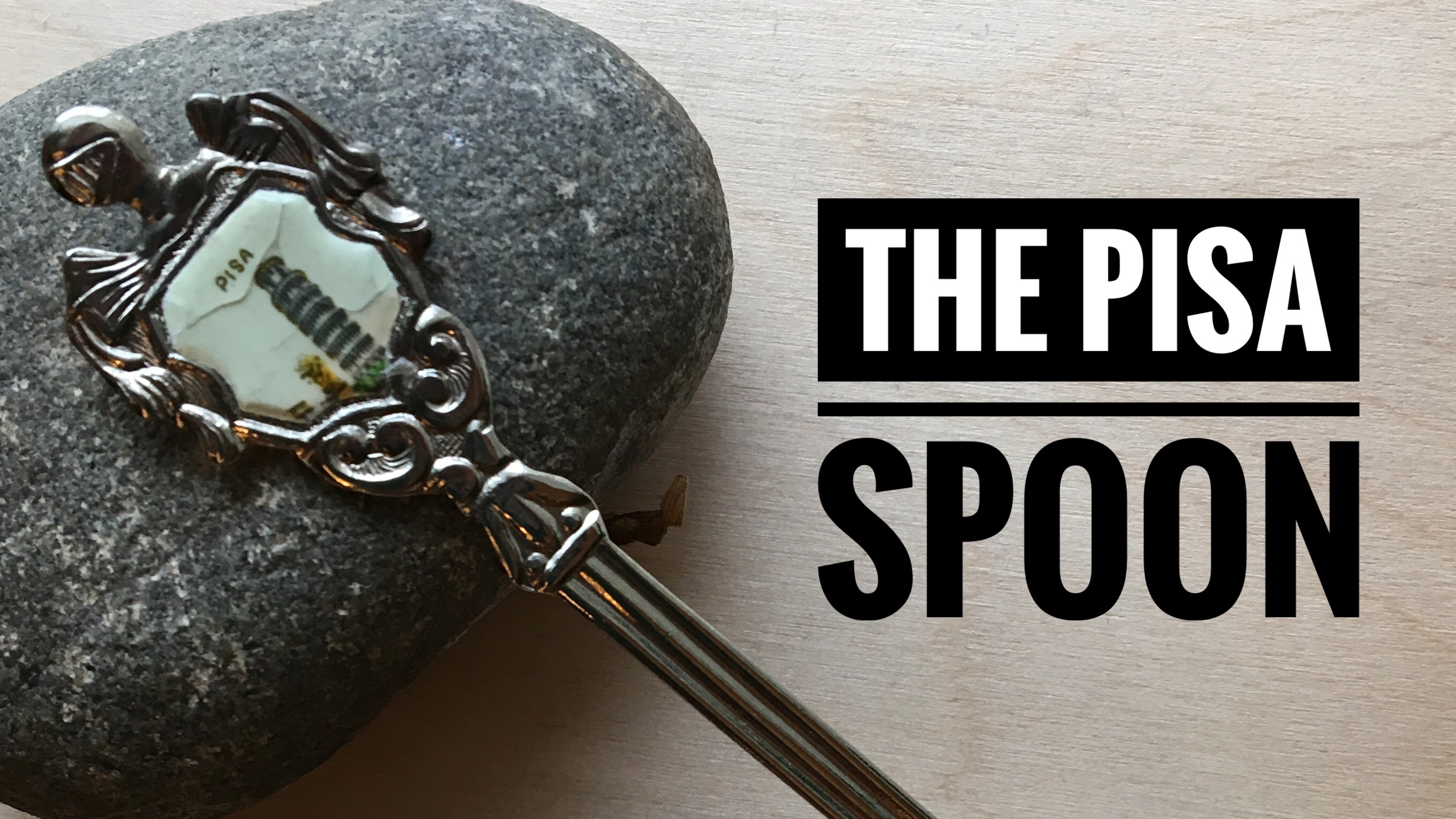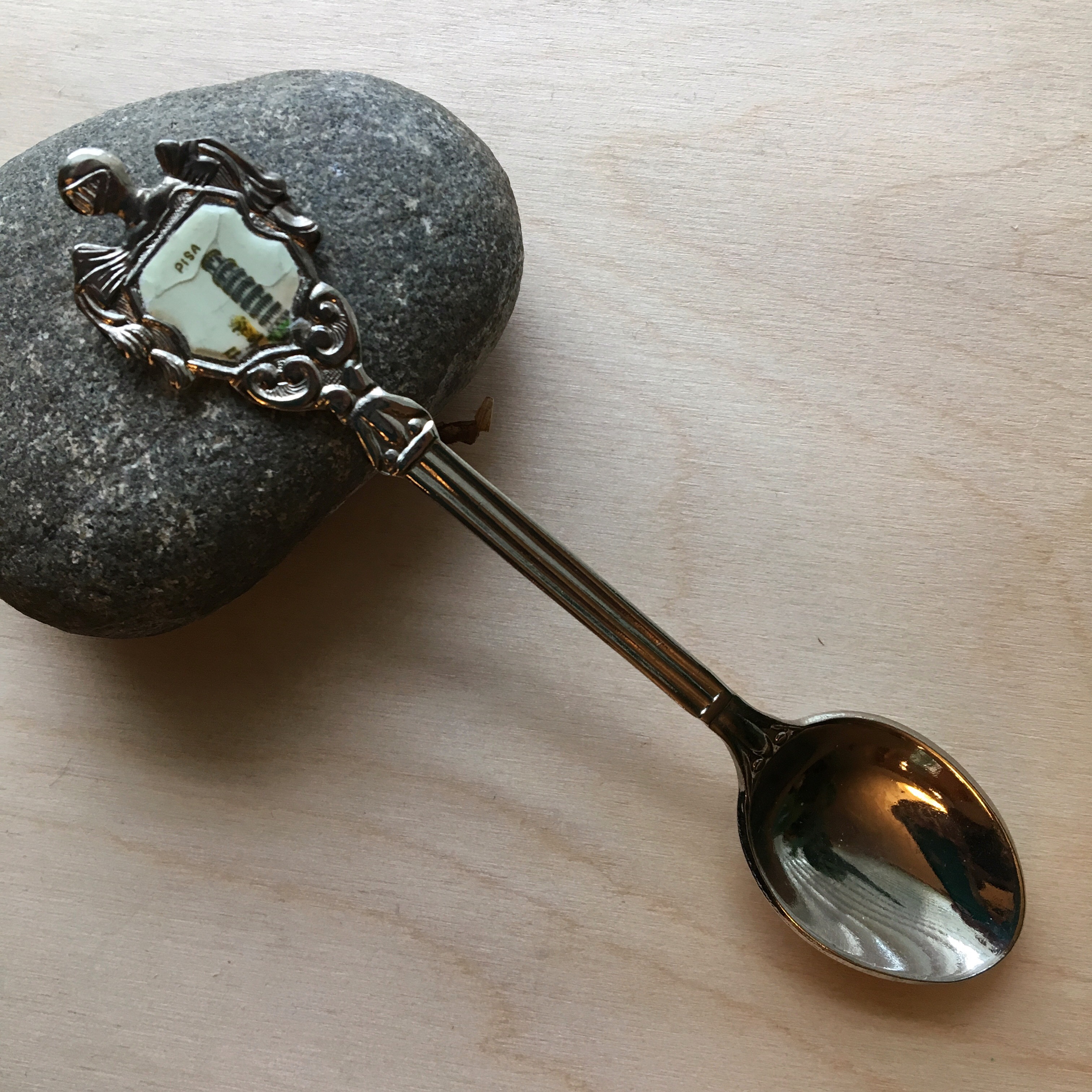My coworker, Daniel, was kind enough to bring this one-of-a-kind souvenir back from his recent trip to Italy. The painting in the shield at the top is Sandro Boticelli’s La Primavera, which was likely commissioned by someone in the Medici family and was completed in 1482.
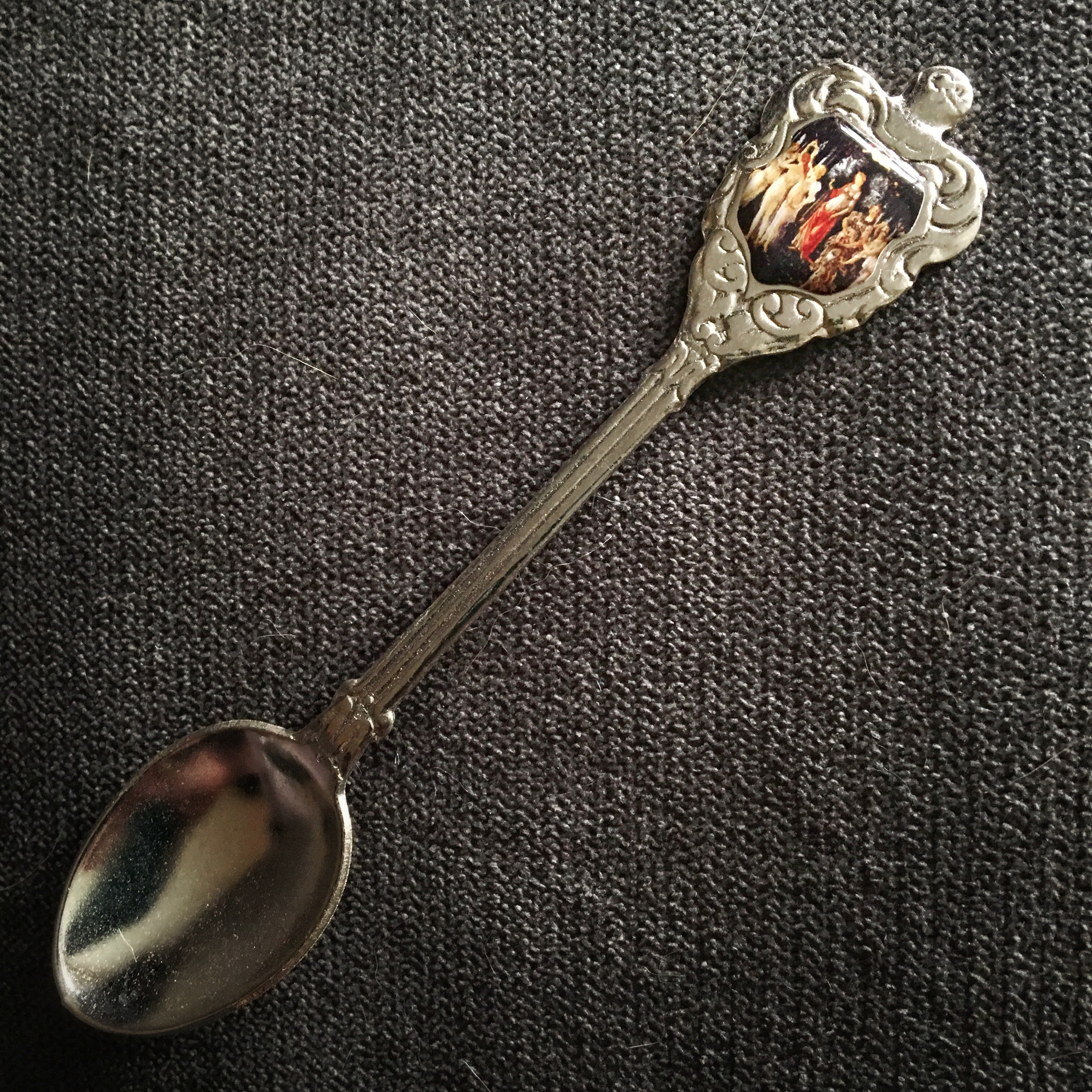
My friend Kate tells me that Mr. Botticelli got a little wrapped up in the teachings of the charismatic Dominican priest, Girolamo Savonarola, and many of his paintings were burned in Savonarola’s infamous bonfire of the vanities in 1497. Luckily, La Primavera wasn’t one of them.
This spoon doesn’t seem to be haunted, but if it is, it would be by Botticelli himself who, according to Kate, “got super Jesus-ey after Savonarola’s burning.” Not the burning of the paintings; Savonarola himself was burned at the stake for heresy in 1498.
Speaking of Savonarola: there’s a fantastic cocktail named after him:
- 1.5 oz Carpano Antica
- 1/2 oz Frangelico
- 1 oz lemon juice
- 1 oz lime juice
- 1 oz simple syrup
Pour the vermouth and Frangelico into an ice-filled glass, add lemon, lime, and simple syrup, stir well. Garnish with orange wedge and a cherry.

